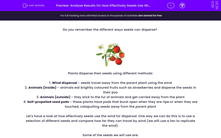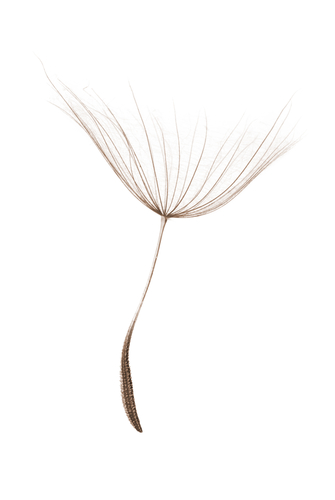Do you remember the different ways seeds can disperse?
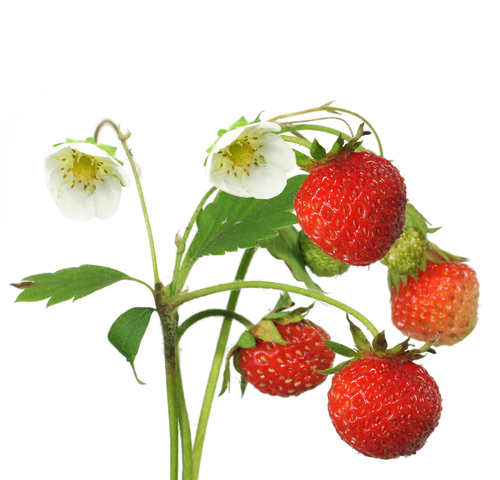
Plants disperse their seeds using different methods:
1. Wind dispersal - seeds travel away from the parent plant using the wind
2. Animals (inside) - animals eat brightly coloured fruits such as strawberries and disperse the seeds in their poo
3. Animals (outside) - they stick to the fur of animals and get carried away from the plant
4. Self-propelled seed pods - these plants have pods that burst open when they are ripe or when they are touched, catapulting seeds away from the parent plant
Let's have a look at how effectively seeds use the wind for dispersal. One way we can do this is to use a selection of different seeds and compare how far they can travel by wind (we will use a fan to replicate the wind).
Some of the seeds we will use are:
| Sycamore maple seeds |  |
| Acorn | .jpg) |
| Dandelion seed |
|
| Horse chestnut (conkers) | 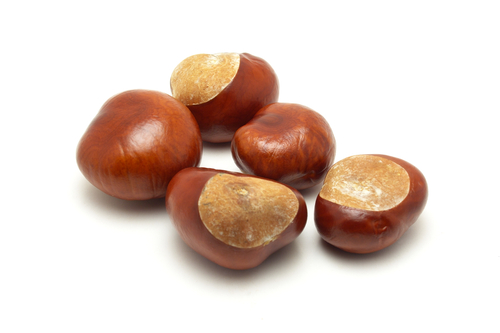 |
When investigating something, we need to form a hypothesis, which is the scientific term for an idea about how something works or how it changes. We then have to do experiments to see if our hypothesis (idea) is correct.
One hypothesis might be that out of all the seeds tested, dandelions will travel the furthest because they have thin hairs that help them float using the wind.
The type of seed used in this investigation is known as the independent variable, which is the factor we are investigating. The dependent variable is the factor we measure, so in this investigation it will be the the distance the seed travels.
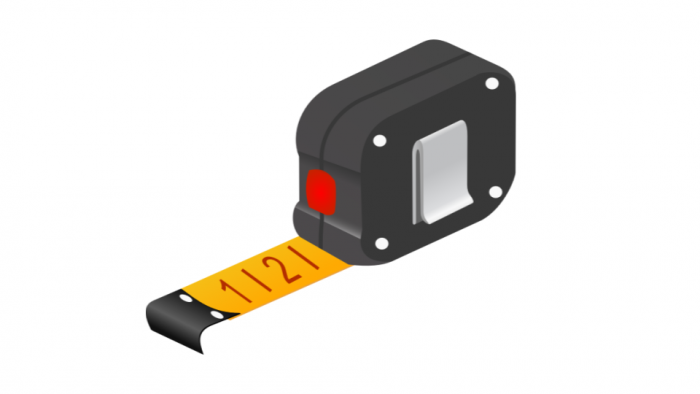
Control variables are things we control so that they don't interfere with our experiments. For example, in this experiment, if we drop the dandelion seed at a height of 2 metres and the other seeds at 1 metre, this could affect our results. Or if we stand really close to the fan when we let go of the seed and then further away the next time, this could also affect our results.
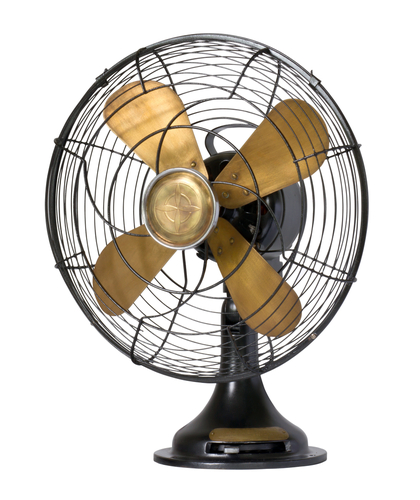
In this investigation, we will use a selection of seeds to find out how effectively they use wind dispersal.
The equipment we need is:
- Selection of different seeds. We will use acorn seeds, sycamore maple seeds, dandelion and horse chestnut (conker) seeds
- Metre ruler or tape measure
- Electric fan
- Tape
To carry out our experiment we will follow a method:
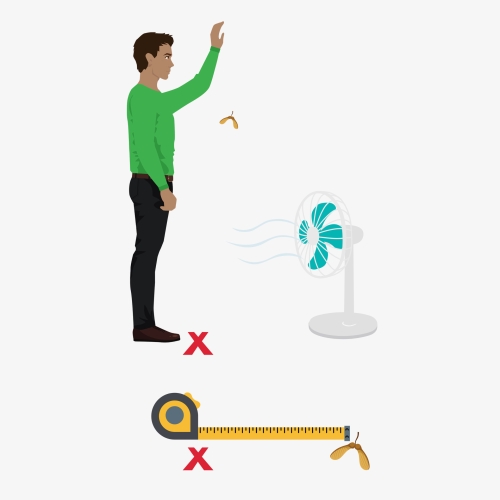
Method
1. Use a tape measure and find 200 cm from the floor.
2. Mark this height using a piece of tape on the wall. This will be the dropping guide when dropping the seed.
3. Using the masking tape, make a small cross on the floor. Aim for this cross when dropping the seed.
4. Place the electric fan at around 100 cm from the floor. Select a low setting for the strength of the fan. Turn it on and make sure it's blowing in the direction of where the seed will drop.
5. Drop the seed from the 200 cm height, directly above the cross on the floor.
6. Measure where the seed first lands from the centre of the cross using the tape measure. If the seed rolls away, ignore this distance.
7. Repeat this five times using the same seed. Record your results as you go.
8. Repeat this method with all the other seed types.
As we're doing our experiment, we should record our results in a clearly labelled and organised table. Below is an example of some results:
| Seed Type | Distance dispersed (cm) | Average Distance (cm) | ||||
| Drop 1 | Drop 2 | Drop 3 | Drop 4 | Drop 5 | ||
| Sycamore | 8 | 9 | 7 | 8 | 9 | 8.2 |
| Acorn | 3 | 4 | 2 | 3 | 2 | 2.8 |
| Dandelion | 18 | 17 | 16 | 15 | 18 | 16.8 |
| Horse Chestnut | 1 | 2 | 2 | 1 | 2 | 1.6 |
We calculate an average by adding all the drops and dividing by the number of drops:
Drop 1 + Drop 2 + Drop 3 + Drop 4 + Drop 5 = Total
Total ÷ 5 = Average
A results table allows us to spot any patterns or even any mistakes. We can then plot these results on a graph:

When plotting our graph, we must make sure that the independent variable (seed type) is on the x-axis (the horizontal one) and the dependent variable (distance) goes on the y-axis (the vertical one).
Once we've presented our data we can start to have a look for patterns.
From looking at the graph we can see that the dandelion seed dispersed the furthest, on average a distance of 16.8 cm with the horse chestnut dispersing the least at 1.6 cm.
These results suggest that our hypothesis was correct!
Dandelions will travel the furthest because they have thin hairs that help them float using the wind.

In this activity, we will analyse results on how different seeds use wind dispersal.

